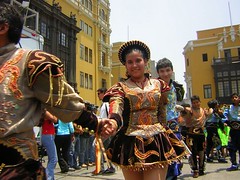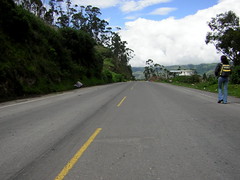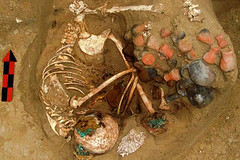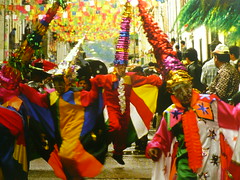The Aqueducts of Cantalloc, also known by the more hispanified Cantayo, are one of the Nazca civilisation’s greatest achievements – building them was a far more difficult task than creating the Nazca lines.
Category: "Ica, Pisco, Nazca Guide"
Patrimony destroyed by earthquake
The incompetent INC, that’s Peru’s Instituto Nacional de Cultura or National Institute of Culture, has once again found itself responsible for destroying Peru’s priceless heritage.
Not content with exploiting and destroying Machu Picchu, and despite the vast revenue way into the tens of millions of US dollars they pull in, they had housed precious artefacts in cheaply constructed museums that are not earthquake proof in Ica and Paracas.
The Huaca Centinela and the Chincha culture
The Huaca Centinela was one of the principle centres of the Chincha people, a group of farmers, fishers and merchants that lived in the fertile valley that is now named for them. The Chincha nation existed in the area between the years 900 and 1495 when they were folded into the Inca Empire.
Haciendas of Ica
Haciendas are something characteristic of Peru’s countryside. Haciendas were not only the residence of the owner, but an administrative centres and deposits. Haciendas were always built in grand style, they were large but functional. They had chapels with gold-leaf alters, and galleries of arcs and patios that looked over the countryside.
El Carmen
The town of El Carmen, in the Chincha region of the department of Ica, is in the center of an area that is home to the majority of Peru’s African descendents. It is here in Ica that the majority of slave-owning haciendas were located and when the slaves were finally freed they set up small towns like this one. Their descendents continued to work at the haciendas until their decline and some still work the land to this day, but now its for their own benefit not anyone else’s.






![Part 3: A visit to the men’s prison in San Juan de Lurigancho [Featured]](http://farm4.static.flickr.com/3625/3395439630_49fd35692a_m.jpg)

![The Milk of Sorrow Joins Growing List of Works about Shining Path Years [Featured]](http://farm4.static.flickr.com/3431/3383265796_09361b0b6b_m.jpg)

![When the U.S. sneezes, Peru drinks tea. [Featured]](http://farm4.static.flickr.com/3192/2959833537_af77ed5003_m.jpg)